Key takeaways:
- MVC (Model-View-Controller) offers clear separation of concerns, making development and maintenance easier, especially for straightforward applications and teamwork scenarios.
- MVVM (Model-View-ViewModel) enhances the development experience with two-way data binding and maintainability, making it ideal for rich interactive applications and real-time updates.
- Choice between MVC and MVVM depends on project complexity and requirements, with MVC being suitable for simpler projects and MVVM excelling in applications focused on user interaction.
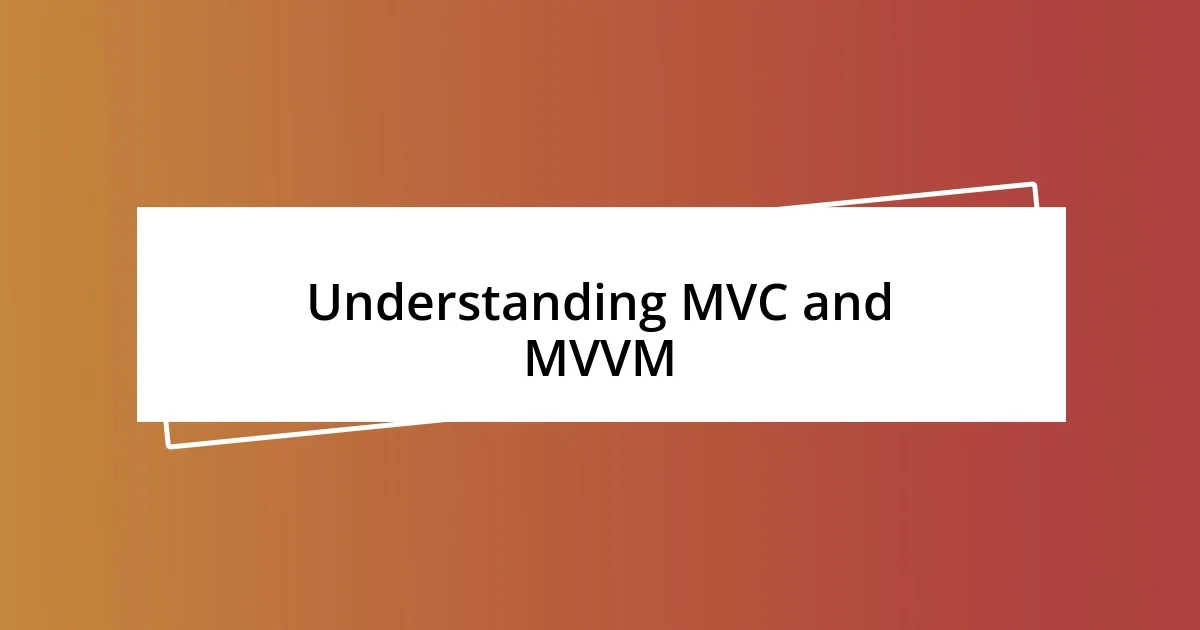
Understanding MVC and MVVM
Let’s dive into MVC and MVVM, two prominent architectural patterns in software development. MVC, or Model-View-Controller, separates an application into three interconnected components, fostering organized code and easier management. I remember when I first worked with MVC; it felt like a breath of fresh air, allowing me to clearly define the roles of each component and streamline my development process.
On the other hand, MVVM, which stands for Model-View-ViewModel, elevates this separation further by introducing a ViewModel as an intermediary. This pattern allows for two-way data binding, which means that changes in the UI automatically update the underlying data model. Can you imagine the ease of development when you don’t have to write all that boilerplate code for syncing the view and the model? That realization made me appreciate MVVM so much more, especially during projects where rapid prototyping was essential.
While both patterns serve similar purposes, they cater to different scenarios. Personally, I lean towards MVVM when working with rich UI applications, as it provides a more reactive approach. However, there’s a certain simplicity and straightforwardness I still cherish about MVC, particularly for smaller projects. Isn’t it fascinating how your choice depends on the project’s complexity and requirements?
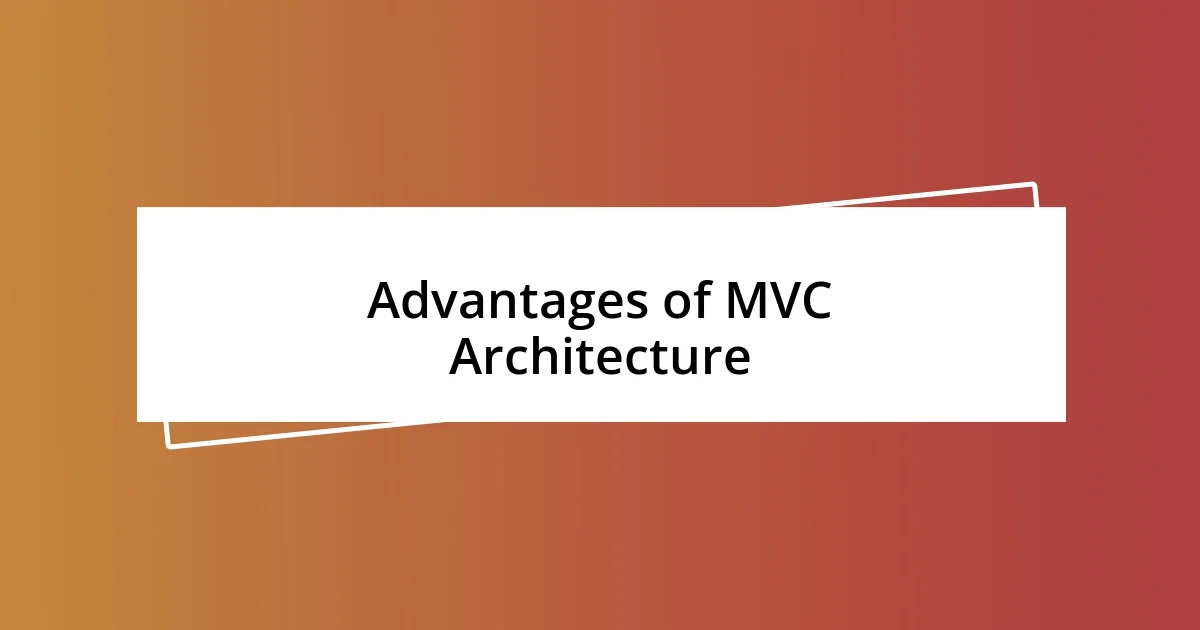
Advantages of MVC Architecture
MVC Architecture provides several advantages that make it a popular choice among developers. One of the biggest benefits is its clear separation of concerns. By dividing the application into three components—Model, View, and Controller—it simplifies both development and maintenance. I recall a project where this separation allowed my team to work concurrently on different parts of the application, drastically improving our efficiency.
Another advantage of MVC is its scalability. When an application grows, adding new features becomes more manageable within this framework. For instance, during one of my earlier projects, we needed to implement a new user authentication system. Thanks to the MVC structure, we could introduce that feature without overhauling the entire codebase, which was a huge relief.
Moreover, MVC promotes a more organized codebase, making it easier for new developers to understand the flow of the application. I can vividly remember onboarding a junior developer who quickly grasped the project because of the streamlined structure MVC provided. It felt rewarding to witness how fast they were able to contribute, thanks to the clarity brought by MVC.
| Advantages | Details |
|---|---|
| Separation of Concerns | Clearly divides application into Model, View, and Controller. |
| Scalability | Easier to add new features without massive rewrites. |
| Organized Codebase | Facilitates faster onboarding of new developers. |
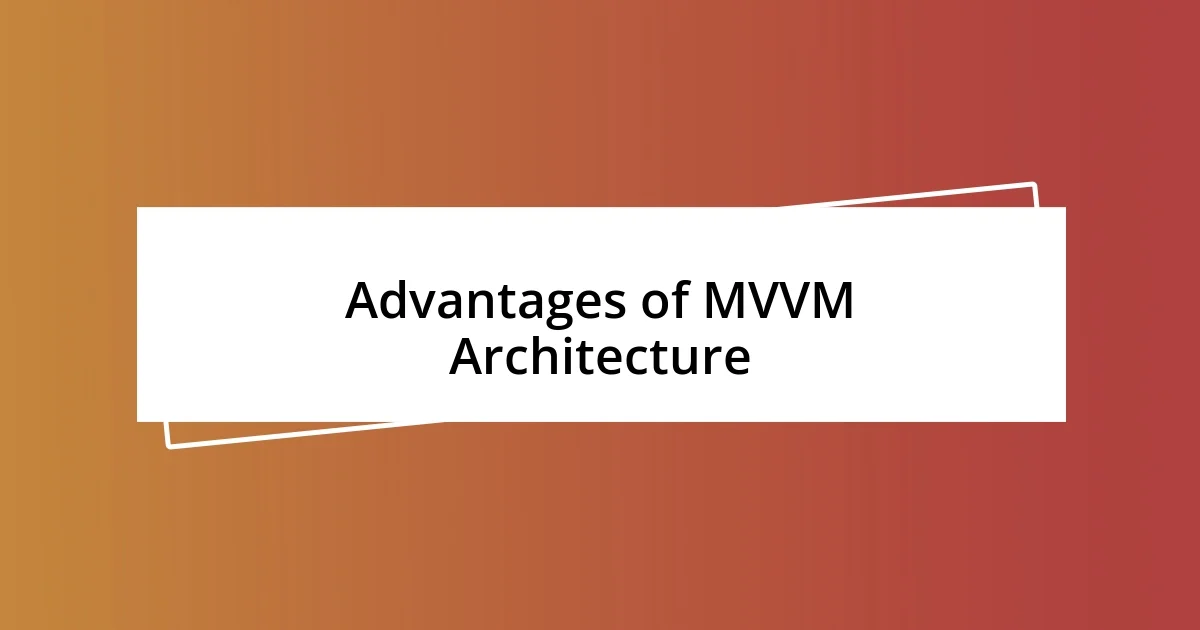
Advantages of MVVM Architecture
The MVVM architecture offers remarkable advantages, especially for developers focusing on rich and interactive user experiences. What really stands out to me is how this approach enhances maintainability. By clearly defining the ViewModel as an intermediary between the View and the Model, it becomes easy to modify or replace one component without affecting the others. I remember a project where we had to redesign our UI. Thanks to MVVM, we could focus solely on the View layer, leaving the underlying business logic untouched, which was a relief amidst tight deadlines.
Another key advantage is its support for two-way data binding. This feature simplifies data synchronization, eliminating the need for manual effort and boilerplate code. There was a time when I was overwhelmed with the hassle of keeping my UI and data model in sync using MVC. Transitioning to MVVM changed my perspective; the reduction in repetitive code felt like lifting a burden off my shoulders. Ultimately, for applications with dynamic interfaces, MVVM provides an efficient framework that I deeply appreciate.
- Maintainability: Changes in one component don’t impact others, streamlining updates and redesigns.
- Two-way Data Binding: Automatic synchronization between UI and data, reducing boilerplate code.
- Improved Testability: Decoupled components mean they can be tested in isolation, leading to higher code quality.
- Clearer Structure: The explicit separation of concerns leads to a structured approach, which enhances clarity for developers.
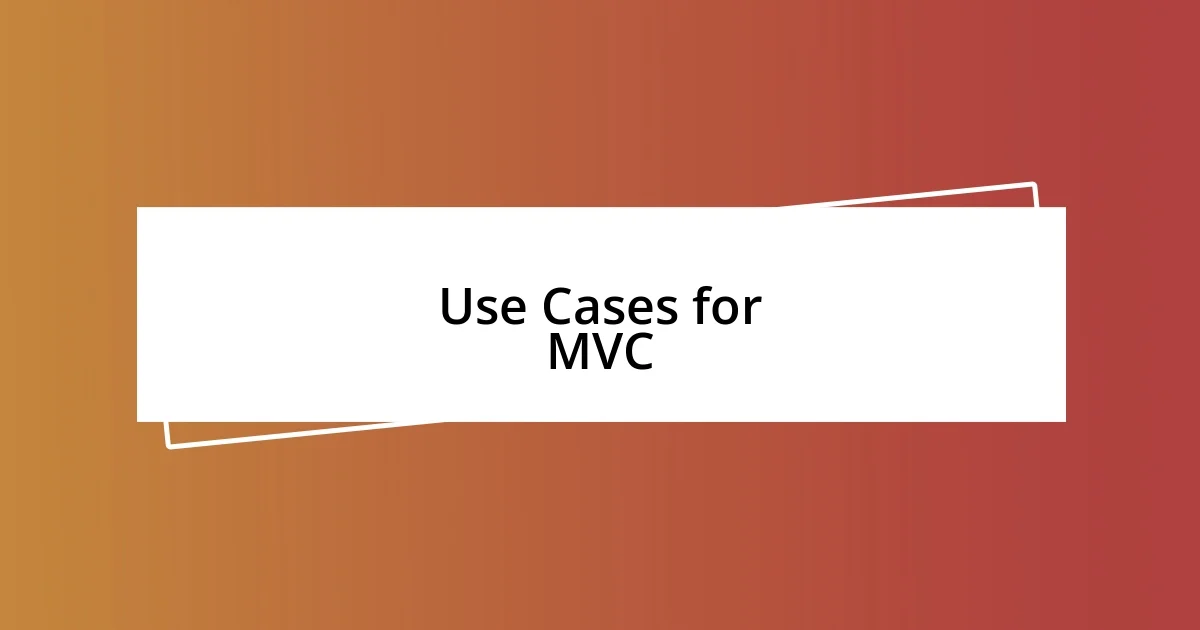
Use Cases for MVC
MVC shines bright in web applications needing a quick and efficient development cycle. I often think back to a website I built for a local business, where we had a tight deadline. Utilizing MVC allowed my team to partition our tasks seamlessly; while one of us refined the user interface, another focused on database interactions. This really illustrated the power of MVC in fast-paced environments.
Another compelling use case I’ve encountered is when building applications with straightforward user interactions. In one project, a simple data entry form was needed, and MVC made this a breeze. The separation of concerns meant that I could quickly modify the controller or the view independently without worrying about unforeseen consequences. It felt liberating to make changes swiftly and see them reflect in real-time.
Lastly, the MVC pattern is particularly effective in large-scale applications that may require multiple developers. I remember collaborating with several teams on a finance app. By sticking to MVC, everyone maintained clarity on their roles, resulting in smooth handoffs and communication. It’s astonishing how a structured architecture can foster teamwork and effectively streamline development efforts.
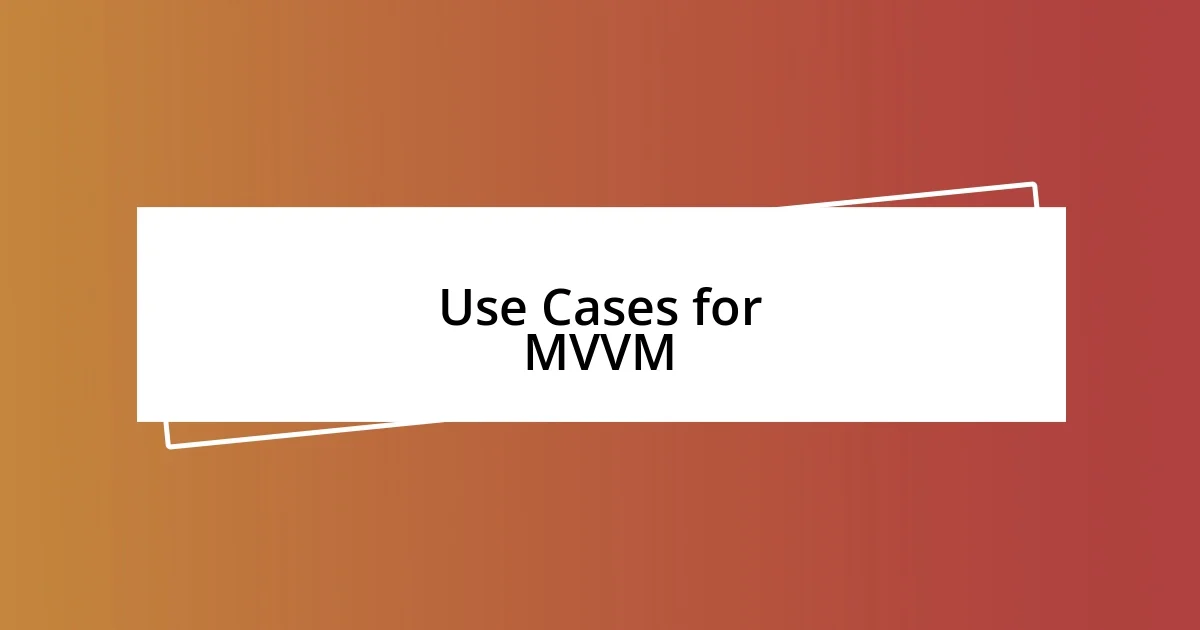
Use Cases for MVVM
The MVVM pattern truly shines in applications that rely heavily on user interactions, especially in environments where real-time updates are essential. I once worked on a mobile app for social networking that required constant user engagement. Implementing MVVM allowed me to implement features like live comment updates without hassle. I was amazed at how smooth the interactions became, feeling almost seamless for the users.
In scenarios with complex data operations, the benefits of MVVM become even clearer. I recall developing a financial dashboard where users interacted with multiple data sources simultaneously. MVVM’s ability to maintain separate bindings for views and their data models meant I could update the underlying data without disrupting the user’s experience. The result? Users could analyze their data in real-time with minimal delay; it was incredibly fulfilling to watch their experience improve thanks to this architecture.
Moreover, when testing takes center stage, MVVM comes to the forefront. During a recent project involving a health tracking app, I vividly remember writing unit tests for the ViewModel without the need for any UI context. This ease of testing reassured me about code quality; it felt like breathing fresh air after being in a stuffy room. Isn’t it comforting to know that structured practices can lead to not only better code but also a more enjoyable development process?














